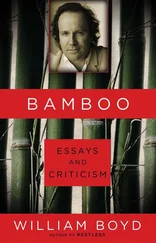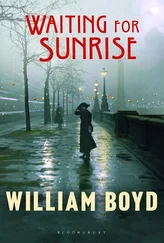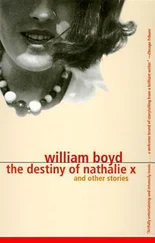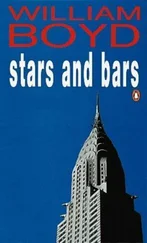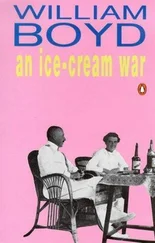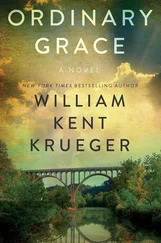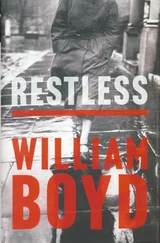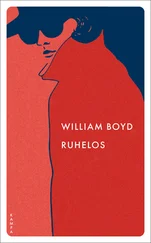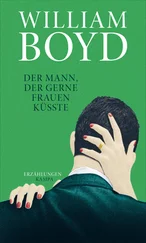Adam sat and sifted through the few pages in the file, trying to muster up some real forensic or analytical intent. It was a simple list of names and ages (all young children, clearly) and beside each name, in small neat handwriting — Wang’s? — was some form of shorthand that looked like the record of some kind of dose: “25ml i⁄v × 4—75ml b⁄m × x 6’. Beside each name was the name of a hospital: one in Aberdeen, one in Manchester, one in Southampton and one in London — St Botolph’s in Rotherhithe. Wang had told him he was an ‘immunologist”—so perhaps some sort of clue might be found in St Botolph’s Hospital.
♦
Adam now leapt over the fence of the triangle on to the Embankment pavement as if it were the most natural, unconcerned thing in the world. Conscious of the new reward advertisements, he was not wearing his raincoat nor carrying his briefcase. He was wearing his tie, however — in an effort to look presentable — and he had his wallet, credit cards and mobile phone on him. His dense, growing beard made him look vaguely disreputable but he hoped the suit and the tie would counterbalance this. He had a strange confidence in his invisibility in the city — he was already a long way from the man pictured in that wedding photo, so widely disseminated: nobody was going to connect this new version of Adam Kindred with that one. He was also aware that he had £18.78 on him — all his cash.
He had thought about using his card to extract more cash from the many cash machines he passed but he had sensed instinctively that the only way to avoid detection in a modern twenty-first-century city was to take no advantage of the services it offered — telephonic, financial, social, transportational, welfare-related and so on. If you made no calls, paid no bills, had no address, never voted, walked everywhere, made no credit card transactions or used cash-point machines, never fell ill or asked for state support, then you slipped beneath the modern world’s cognizance. You became invisible or at least transparent, your anonymity so secure you could move through the city — uncomfortably, yes, enviously, prudently, yes — like an urban ghost. The city was full of people like him, Adam recognised. He saw them huddled in doorways or passed-out in public parks, begging outside shops, sitting slumped and wordless on benches. He had read somewhere that every week in Britain some 600 people were reported as missing — almost 100 people a day — that there was a population of over 200,000 missing people in this country, enough to fill a sizeable provincial city. This lost, vanished population of Great Britain had just gained a new member. Nobody appeared able to find these missing people unless they themselves wanted to be found and gave themselves up or returned home — they just seemed to disappear, swallowed up — and Adam thought it shouldn’t be too difficult to join their number, as long as he didn’t make any foolish mistakes. He tried not to think how he was going to survive when his money ran out tomorrow or the next day.
He Tubed to Rotherhithe and, emerging from the Underground station, asked a mother with two young children where he could find St Botolph’s Hospital.
“St Dot’s?” She pointed. “Just head down to the river. Can’t miss it.”
And indeed it was unmissable, sitting like a great lucent cruise ship — like several, lucent cruise ships — on the Bermondsey⁄Rotherhithe shore, across the river from Wapping. At the centre of this modernist conglomeration of buildings was the small redbrick Victorian hospital—‘St Botolph’s Hospital for Women and Children’ proudly emblazoned in blue and cream tiles across its ornate façade. On either side the glass and steel stacked floors of the new NHS Foundation Trust Hospital’s buildings spread through its car parks and newly landscaped gardens, some of the blocks linked by transparent aerial walkways lit by red or green lights — like arteries or veins, Adam thought — no doubt this was the ‘wit’ that had won the architect his gold medal or his knighthood.
Adam followed signs to the reception atrium and stepped into a space that reminded him more of a huge convention hotel in Miami or an airport terminal. Great primary-coloured abstract banners hung from the cantilevered glass ceiling sixty feet above his head and fully grown trees — bamboo, weeping fig, palms — grew from small, walled islands here and there. He could hear the sound of plashing water (piped or genuine? — he couldn’t tell).
People wandered to and fro in this vast transit lounge — in transit from health to ill health, Adam supposed, or vice versa — some, in dressing gowns, were clearly patients, others, in multi-zipped overalls in differing pastel shades, with name-badges on their breasts and dangling ID photos hung around their necks, were orderlies or administrators of various kinds. There were also people like him in civilian clothes that must have been either visitors or else putative patients seeking entry into this self-contained, health-city. The mood was calm and unhurried — like an ante-room to heaven, Adam thought, as he wandered deeper into the atrium, his ear now picking up some inoffensive jazzy muzac. Nobody asked him who he was or what he was doing here; he imagined he could live in this building for days, unnoticed, as long as he drew no attention to himself. But then he saw the CCTV cameras everywhere — small and discreet, barely moving this way and that — nothing was that simple any more.
He went to a desk set beneath a superimposed blue neon T where a girl in an apricot overall smiled welcome at him. The name badge on her breast read ‘Fatima’.
“I’m looking for Dr Philip Wang,” he said, and she typed Wang’s name into her computer. He watched carefully to see if any alarm or curiosity registered on her face but there was none. He might as well have asked for Dr John Smith.
“Felicity de Vere Wing, level six,” she said.
“Thank you, Fatima.”
Following Fatima’s directions, Adam headed towards a cluster of glass and steel columns that contained the scenic elevators serving the nine floors of St Botolph’s. As he rode upward, Adam felt he was in some kind of human hive, a hive dominated by signs and acronyms: everywhere there were signs, signs that made sense and others that didn’t; signs that were welcoming and vaguely reassuring, others that provoked sudden dark fears — A&E, Radiology, Pathology, Cafeteria, GUM (what was that?), Neuroscience Centre, Teenage Pregnancy Clinic, Sigmoidoscopy Dept., car park 7, IBD clinic, Medicine Management Services, ENT and Audiology — signs that directed him to segments of buildings on this campus where every potential health need could be catered for — it seemed — in every functioning part of the human body and its glossary of maladies, from birth to death.
Emerging at level six he looked over the balustrade to the swarming life on the atrium floor below and marvelled, dizzily. He felt like a modern Dante in an antiseptic inferno — all he needed was his guide.
And his guide duly came to him in the form of a man in a pistachio overall and matching turban who asked if he could help. Adam said ‘The Felicity de Vere Wing’ and he was sent down a wide corridor that led to one of the vertiginous, aerial green-lit tubes linking him with another of St Botolph’s many modules. As he walked along the tube Adam could see, through the smeared plexi-glass, the river to his left curving gently round Wapping. The first lights were coming on in the city as dusk set in but Adam sensed that in St Botolph’s it was forever a fluorescent twenty-four-hour day, 365 days a year. Nothing stopped here: darkness and light, summer and winter solstices, heat and cold, the changing seasons meant nothing. People arrived, they were admitted, they were healed and sent on their way — or they were not and they died.
Читать дальше

